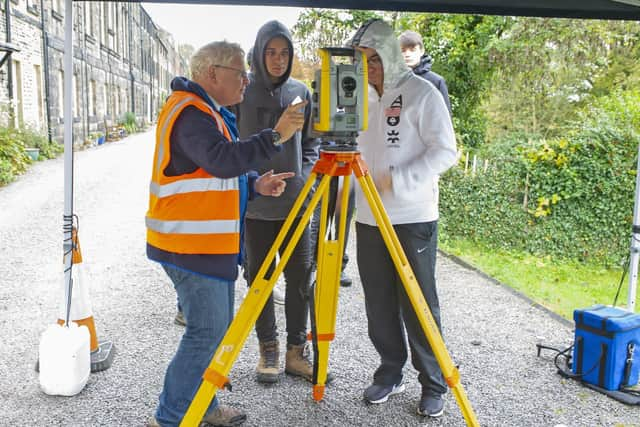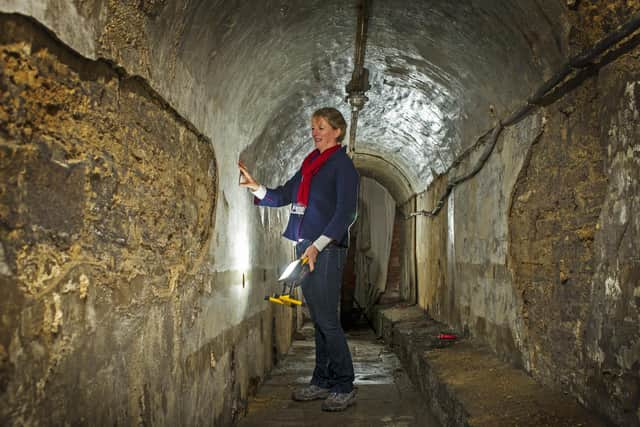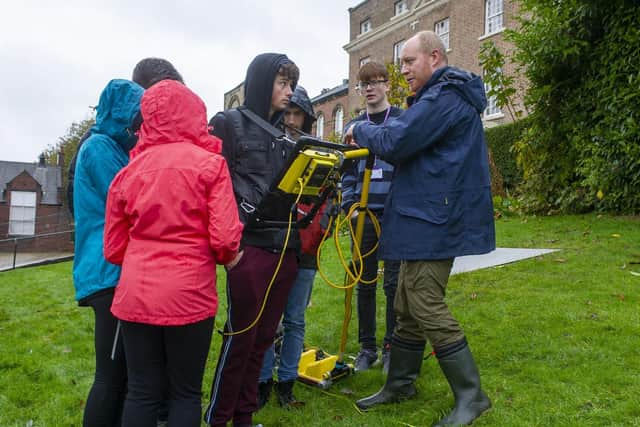Geo-explorers delve into historic underground tunnels at Leeds school
and live on Freeview channel 276
Fulneck School in Pudsey is based on a Moravian settlement, dating back to 1753, with most of the original buildings still standing and in use today.
It is believed the historic tunnels - which have graffiti on the walls dated 1862 - were used as air raid shelters during times of conflict.
Advertisement
Hide AdAdvertisement
Hide AdDuring the Second World War, nearby Stanningley was bombed and it is likely residents of West Leeds headed there for safety during the 1940s.


The tunnels have been deserted for decades until now, and for A level students studying physics, they are providing the perfect location for a geophysical investigation.
The school has teamed up with professors, lecturers and post-graduates from Leeds University, using specialist equipment worth more than £200,000, including radars and gravimeters, as part of a special exploration day.
Dr Caroline Neuberg, head of science at Fulneck School, said: “We are delighted to welcome a team of geophysicists from the School of Earth and Environment at Leeds University, who came to demonstrate the use of modern geophysical tools as taught in A level physics.
Advertisement
Hide AdAdvertisement
Hide Ad“We invited other schools to come along and had a total of 40 students from Allerton High School, Greenhead College and Fulneck School.”


She said that youngsters concerned with topical environmental issues were often not aware that geophysics provides the ideal toolbox to trace pollutants, monitor fracking induced seismicity, and to tackle other environmental problems.
Dr Neuberg added that the sixth formers really enjoyed the day: “Fulneck School has buried tunnels that provide the ideal targets to demonstrate geophysical techniques such as radar, seismics, magnetics and gravity.
“The A level Physics students had the opportunity to obtain first hand experience in these techniques and get an insight into the wider world of geophysics.”
Advertisement
Hide AdAdvertisement
Hide AdThis day is just one of the activities the science department puts on throughout the year.


The 320 pupil independent day and boarding school uses half of the buildings on the site, and the remainder is used as housing by people from the neighbouring Moravian community and church.
FACTFILE
Britain's largest Moravian settlement, is based at Fulneck, near Pudsey.
Some 80 people live on the settlement, 90 per cent of them Moravians.
The settlement is a time capsule of Georgian village life, with cottages and public buildings running in parallel terraces, along with the 320 pupil independent day and boarding school.